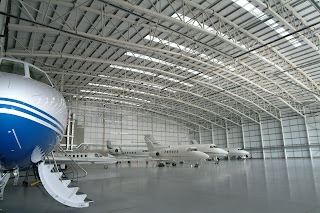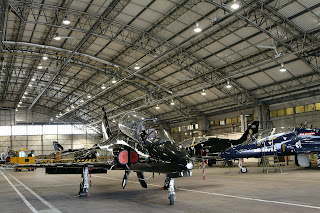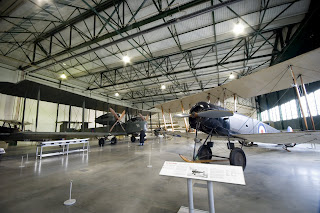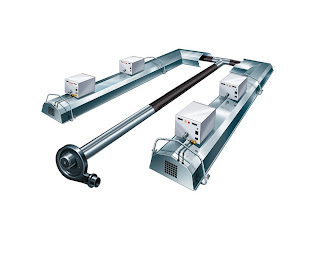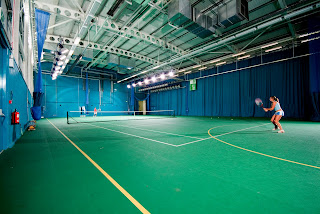
The first examples of the Optimum Sports Hall – the benchmark design for combined school / community sports facilities, developed by Sport England – are now up and running. These high-tech, low energy, low maintenance buildings are constructed to an exacting specification that covers not just design, build quality and performance parameters, but also prescribed products.
To achieve the required comfort temperatures at optimum energy efficiency,
radiant heating has been specified for the multi-use sports hall within the Optimum Sports Hall. In pilot projects now completed,
Nor-Ray-Vac continuous radiant tube heating from
AmbiRad has been installed.
Nor-Ray-Vac provides effective heat coverage throughout large-space buildings – at a relatively low environmental temperature and without wasting energy warming the entire volume of air. Its ease of operation, low maintenance, energy efficiency and discreet appearance match the objective and purpose of the Optimum Sports Hall.
In commissioning a design for the Optimum Sports Hall, Sport England was looking for ways to make the process of building new sports facilities as streamlined and cost efficient as possible – an off-the-peg design that would save time and professional fees for community and local authority clients wishing to develop a sports hall.
A wider political philosophy underpins the initiative. As a nation we are significantly less fit than we were 50 years ago. Levels of obesity are rising – a particularly worrying trend in children – and key health indicators, such as the incidence of heart disease, are showing deterioration. Access to active sports has polarized in favour of private, often expensive, fitness suites over free or heavily subsidized community facilities.
Sport England wants everyone to be attracted to playing sport and to have access to facilities within their local community. The Optimum Sports Hall template sets benchmark standards for an inviting, open-to-all, multi-use sports centre that can be built, run and maintained at relatively low capital and whole-life costs, while creating income streams to meet operational costs.
Paul Gibbins, architect at Sport England, explains: “It is more important than ever that everyone is able to participate in sport for long-term fitness as well as to improve performance and excel. Communal sports facilities are one means of achieving that.
“Sports facilities represent a significant financial investment for local authorities, so they must serve the widest possible number of people.”
The Optimum Sports Hall is designed primarily for school sites, and to be used by schools during the day and the local community outside schools hours. “In appearance and general facilities, it must have customer appeal and compare well with the private leisure market,” adds Paul Gibbins.
The design is based on a single building that houses a four-court multi-use hall, a fitness suite, dance studio, communal changing areas and a generous entrance lobby and social hub. The plan form is compact and reduces circulation to a minimum. All servicing and stores are closely located to make, for example, change-over of equipment or vending machine replenishment quick and easy. There is good visibility from the reception counter and office to ensure effective supervision. The overall ambience is light and airy, with good air quality at all times.
The ‘heart’ of the building is the main hall – a simple vaulted space with a 10m high sloping roof.
Heating, lighting, ventilation, beams, flooring and storage are all designed to ensure the best and most flexible environment for multiple uses.
Radiant tube heating was specified for the main hall because it is “economical to install and effective in its distribution of heat”, according to Paul Gibbins.
He explains: “
Radiant is an effective generator of heat, economical and aesthetic. It provides quick warm up and easy control in different circumstances – for example, active sports or spectating.”
Radiant heating works like the sun, emitting
infra red heat that warms objects and people in its path, but not the air around them. It also gently warms the fabric of the building to provide additional low level background heat. The heaters are suspended from the roof at high level, yet all the warmth is concentrated at the lowest two metres of the building – exactly where it is needed by the building’s occupants.
The economies that can be gained from installing
radiant are substantial. Savings of between 25 and 60% have been achieved when
radiant replaces a traditional boiler and radiator system in a large space building.
In sports hall environments,
radiant has two other key advantages. First, it heats the space very quickly. Users feel warm within minutes – a particularly important factor in preventing muscle injury when people are engaged in active sports.
Second, the physical properties of radiant heat mean the system can be set to a lower air temperature than convection heaters to achieve the same level of comfort. For sports activities, for example,
radiant heaters can be set to 14°C, yet the effect within the building is that of a
heating system operating at 16°C. Over time, this will result in significant fuel cost savings.
The completed pilot projects – St Mary’s College in Hull and Robert Clack School in Dagenham – both opted for the largest of the three generic Optimum Sports Hall designs. This has a 612m² main hall. To heat the space effectively, two
32LR and two
24LR Nor-Ray-Vac burners were specified, positioned at eight metres from floor level. Ball guards protect the heaters and the black bulb sensor that regulates the temperature is also protected from damage.
The system is flued via a vacuum fan located in the nearby plant room. Products of combustion are discharged through the plant room roof. No roof penetrations are therefore necessary in the hall itself, reducing the risk of leaks. Remote fluing also ensures that the system operates silently.
Although only in operation for a few months, the
AmbiRad systems are proving effective for purpose. Carl Southcoat, manager of St Mary’s College sports hall, remarks that: “The hall warms up quickly and the temperature is always just right.”
Over the next year or so, Sport England will be conducting a comprehensive feedback exercise to ascertain usage levels, customer appeal and performance of the radical new buildings. This will include responses to the comfort levels of different users.
Paul Gibbins adds that Sport England is “quite optimistic” that the feedback will be positive.
Web: www.ambirad.co.uk
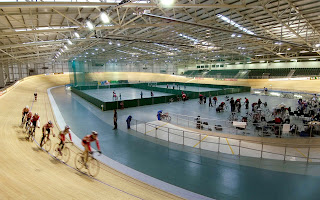 The Wales National Velodrome in Newport, Gwent, is an Olympic standard indoor cycle track, equipped to rival the best facilities in the world.
The Wales National Velodrome in Newport, Gwent, is an Olympic standard indoor cycle track, equipped to rival the best facilities in the world. 



